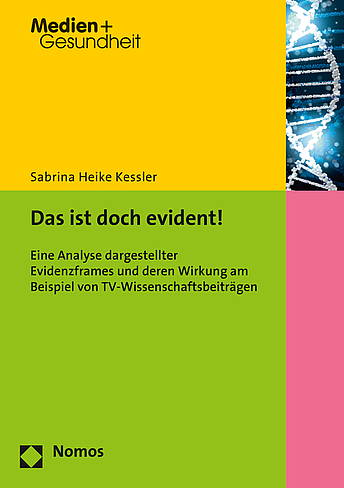englischMedical issues presented on science TV programs are depicted more or less supported by evidence. In one report, science journalists choose different sources of scientific evidence (e.g., experimental studies, case studies, or expert opinions) and represent different argumentations. The way that the evidence for scientific medical issues is depicted in science programs impacts recipients’ beliefs about these issues. In the present study, a standardized content analysis was conducted, applying the Dempster-Shafer-theory of evidence (1976). Frames of evidence were first identified, and then examined experimentally to determine whether and how these frames influenced the beliefs of recipients. A model mapping the dynamic effects of formal-abstract frames of evidence was created, with the role of preexisting beliefs about given issues being a point of emphasis in the discussion.
Dargestellte medizinische Sachverhalte werden in TV-Wissenschaftsbeiträgen unterschiedlich untermauert oder widerlegt; sie werden unterschiedlich evident dargestellt. Wissenschaftsjournalisten stellen dabei verschiedene Quellen von Evidenz (bspw. Studien, Fallbeispiele oder Expertenmeinungen) mit jeweils unterschiedlich dargestellten Argumentationen dar. Wie Sachverhalte in TV-Wissenschaftsbeiträgen belegt werden, hat einen Einfluss darauf, welche Überzeugungen die Rezipienten über diese haben. Mittels standardisierter Inhaltsanalyse und der Methodenerweiterung durch die Evidenztheorie von Dempster und Shafer (1976) wurden zunächst Belegstrukturen identifiziert und anschließend in einem Experiment untersucht, ob und wie diese auf die Überzeugungen der Rezipienten wirken. In der Synopse wird ein Modell erstellt, welches den dynamischen Wirkprozess der formal-abstrakten Evidenzframes abbildet; die Rolle der Voreinstellung wird dabei herausgestellt.


